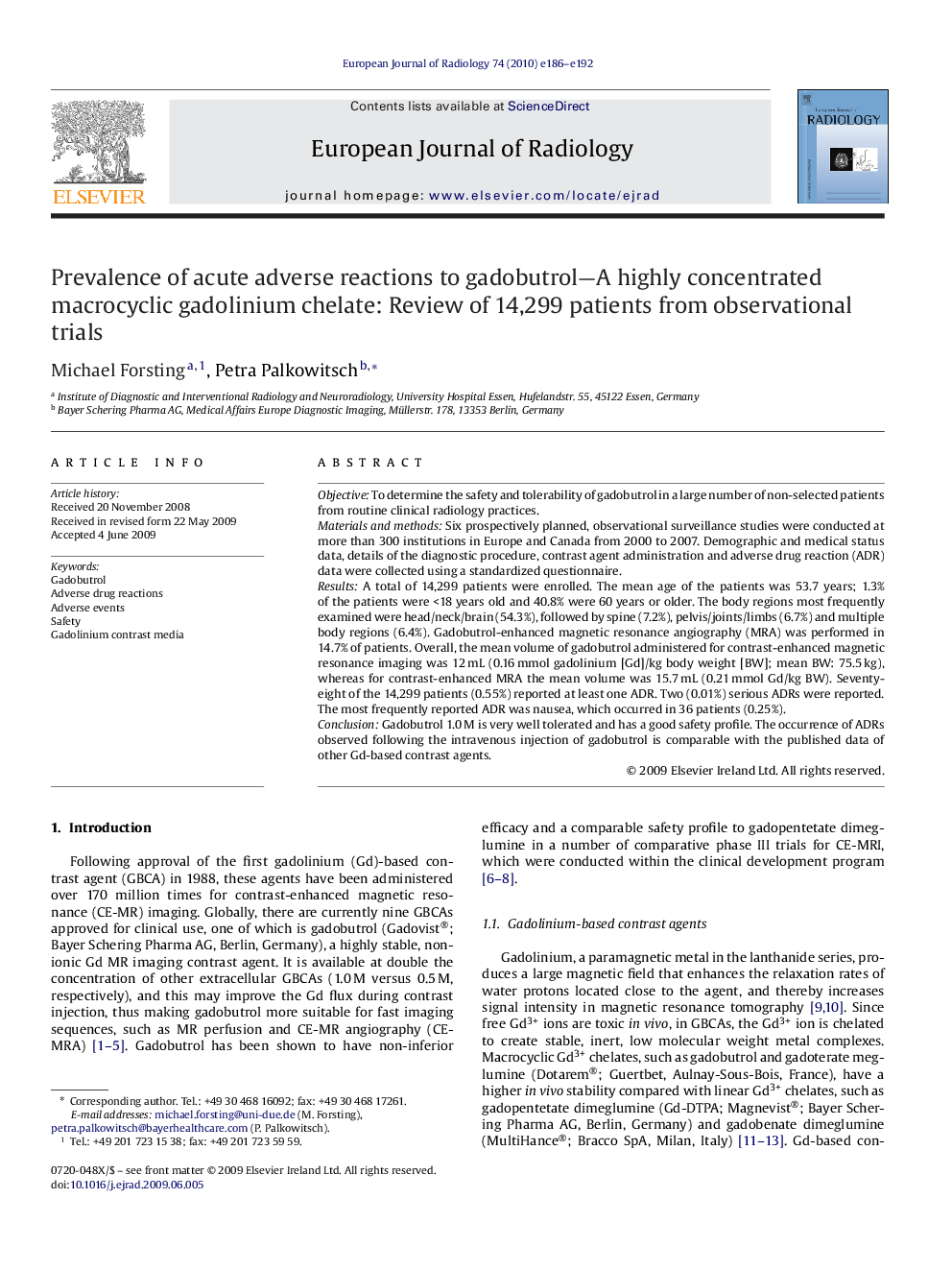| Article ID | Journal | Published Year | Pages | File Type |
|---|---|---|---|---|
| 4227519 | European Journal of Radiology | 2010 | 7 Pages |
ObjectiveTo determine the safety and tolerability of gadobutrol in a large number of non-selected patients from routine clinical radiology practices.Materials and methodsSix prospectively planned, observational surveillance studies were conducted at more than 300 institutions in Europe and Canada from 2000 to 2007. Demographic and medical status data, details of the diagnostic procedure, contrast agent administration and adverse drug reaction (ADR) data were collected using a standardized questionnaire.ResultsA total of 14,299 patients were enrolled. The mean age of the patients was 53.7 years; 1.3% of the patients were <18 years old and 40.8% were 60 years or older. The body regions most frequently examined were head/neck/brain (54.3%), followed by spine (7.2%), pelvis/joints/limbs (6.7%) and multiple body regions (6.4%). Gadobutrol-enhanced magnetic resonance angiography (MRA) was performed in 14.7% of patients. Overall, the mean volume of gadobutrol administered for contrast-enhanced magnetic resonance imaging was 12 mL (0.16 mmol gadolinium [Gd]/kg body weight [BW]; mean BW: 75.5 kg), whereas for contrast-enhanced MRA the mean volume was 15.7 mL (0.21 mmol Gd/kg BW). Seventy-eight of the 14,299 patients (0.55%) reported at least one ADR. Two (0.01%) serious ADRs were reported. The most frequently reported ADR was nausea, which occurred in 36 patients (0.25%).ConclusionGadobutrol 1.0 M is very well tolerated and has a good safety profile. The occurrence of ADRs observed following the intravenous injection of gadobutrol is comparable with the published data of other Gd-based contrast agents.
